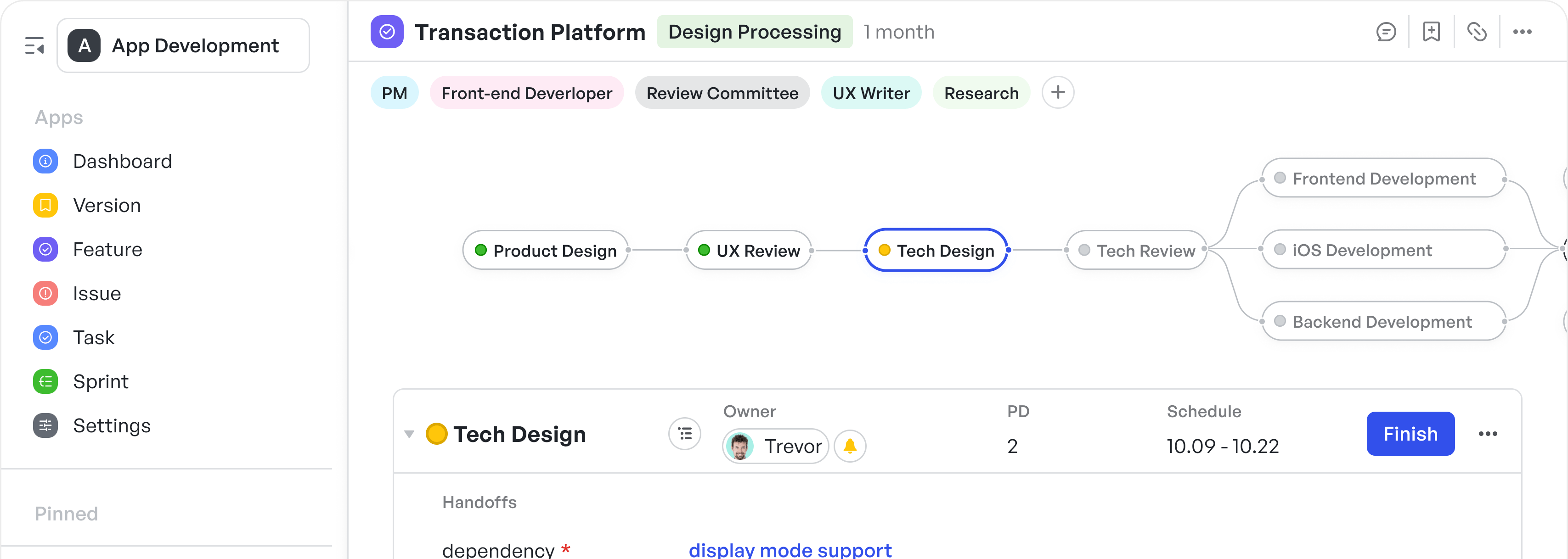Introduction
The success of any project hinges on robust project management, as the chosen methodology critically determines the project's direction and efficiency. Two of the most prominent methodologies in the world of project management are Waterfall and Agile. Each possesses distinct features, advantages, and drawbacks. Here we shall compare Waterfall and Agile methodologies, outlining their key characteristics and how they can be applied within Meegle, a comprehensive project management platform.
What is Waterfall Project Management?
Key Features of Waterfall:
Sequential Phases: The Waterfall model is characterized by a linear and sequential design where each phase must be completed before the next begins.
Thorough Documentation: This necessitates extensive documentation at each phase, making every detail of the project well-articulated.
Clear Milestones: With defined start and end points for each phase, progress is easily measurable.
No Overlapping Phases: Phases do not overlap in Waterfall; it’s a strict step-by-step approach.
Advantages:
Simplicity: The straightforward nature of Waterfall offers easy understanding and implementation, especially for new project managers.
Predictability: If the scope is clear and fixed, the Waterfall method can offer high levels of predictability regarding timelines and budgets.
Structured Design: Useful for industries that demand meticulous records, such as construction and manufacturing.
Disadvantages:
Inflexibility: Any changes in scope or requirements can lead to substantial delays and increased costs.
Late Testing: Issues may only become visible at the testing stage, which is often too late to make simple corrections.
What is Agile Project Management?
Key Features of Agile:
Iterative Development: Agile promotes frequent reassessment and adaptation of plans.
Continuous Collaboration: It heavily involves stakeholders and clients, ensuring their feedback is incorporated.
Flexibility and Adaptability: Agile is designed to accommodate and even benefit from changes in project requirements.
Incremental Deliveries: Frequent releases with iterative testing ensure ongoing improvement and quick identification of issues.
Unlock efficiency with the Meegle Agile Development template!
Advantages:
Responsiveness to Change: Agile methodology is highly adaptable to changing project requirements which is vital in dynamic environments.
Customer Satisfaction: Continuous client engagement results in a higher level of customer satisfaction.
Risk Reduction: With earlier testing and reviews, risks are identified and mitigated early on.
Disadvantages:
Less Predictability: Due to its nature, projects can be less predictable in terms of deliverables and timelines.
Intensive Management: Agile requires an ongoing commitment from team members and stakeholders which can be resource-intensive.
Waterfall vs Agile: Key Differences
When it comes to project management methodologies, two of the most widely-discussed approaches are Waterfall and Agile. Understanding the core differences between Waterfall vs Agile is crucial for organizations to choose the methodology that best fits their project needs and team dynamics.
Project Timeline and Phases
Waterfall project management is linear and sequential, where each phase (conception, initiation, analysis, design, construction, testing, implementation, and maintenance) must be completed before the next begins. This approach can make project timelines more predictable but less flexible.
Agile, in contrast, is iterative and incremental. Projects are divided into small parts, known as sprints or iterations, allowing for ongoing evaluation and adaptation. This flexibility often leads to faster delivery times and the ability to adjust to changes more swiftly.
Flexibility and Adaptability
The Waterfall methodology is less flexible once a project phase has begun, as any changes require going back to the drawing board which can be time-consuming and costly.
Agile thrives on adaptability, permitting teams to respond to changes in client expectations or market trends quickly. This approach supports continuous improvement and allows projects to evolve based on feedback and testing throughout the development process.
Risk Management
In Waterfall projects, risks might not become apparent until the testing stage, which can lead to significant delays or cost overruns if issues need to be remediated.
Agile methodologies incorporate risk management into daily activities and encourage regular reassessment of risks, thus enabling issues to be identified and addressed much more promptly and often less expensively.
Stakeholder Involvement
Waterfall typically involves stakeholders during the requirements and final testing phases, which can sometimes lead to gaps between expectations and the finished product.
With Agile, stakeholder collaboration is a continuous process. Clients and stakeholders are involved throughout the project, providing feedback and adjustments to ensure the end product aligns closely with their needs.
Cost and Resource Planning
Waterfall requires extensive upfront planning and budgeting. Once the project is initiated, deviations from the plan can significantly impact costs.
Agile, with its emphasis on flexibility and iterative development, can potentially lead to more efficient use of resources. It allows organizations to reallocate budget and resources as the project evolves, which can result in cost savings and a more efficiently delivered project.
Understanding these key differences in "waterfall vs agile" methodologies assists organizations in selecting the most appropriate approach for managing their unique projects, balancing the need for predictability and flexibility according to their specific circumstances.
Applying Waterfall and Agile to Meegle
Meegle (also known as Lark Project) is a project management tool designed to support various methodologies. Let's discuss how both Waterfall and Agile could be applied within this tool.
Waterfall on Meegle
In Meegle, a Waterfall approach can be structured using the task or project timelines. Meegle can support Waterfall’s need for comprehensive documentation by attaching files directly to tasks. Progress tracking can be visualized through Gantt charts and milestone tracking, ensuring everyone is aware of the project stage and deadlines.
250px|700px|reset
加载中,请稍后
Agile on Meegle
Agile's iterative cycles can be set up in Meegle using Sprints. The board feature allows the visualization of tasks in the form of Kanban, aligning with Agile's focus on progress and adaptability. Daily standups and sprint reviews can be scheduled within Meegle's calendar, enhancing team collaboration and communication.
250px|700px|reset
加载中,请稍后
Final Thoughts
Both Waterfall and Agile have their place in project management, depending largely on the project’s requirements, stakeholder expectations, and the surrounding environment. In choosing between them, consider factors like project complexity, the need for flexibility, client involvement, and the team's working style.
Meegle supports both methodologies, offering project managers and teams the flexibility to work in the way they find most productive. By understanding these methodologies and their application to tools like Meegle, organizations can maximize their project success rates.





